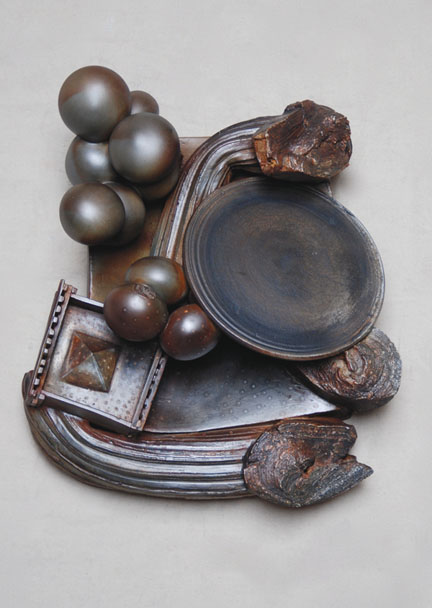Growing Gardens, Growing Art
When Professor of Studio Art Syd Carpenter heard that the National Council on Education in Ceramic Arts was planning to hold its annual conference in Philadelphia in early spring this year, she decided to participate—not with one but two shows.
Carpenter scheduled a one-person show of her own new work titled A Place of Our Own, at the Sande Webster Gallery, where she is an affiliated artist. The idea for the show originated from her research on gardens and farms that are owned, developed, and worked by African Americans.
“I wanted a contemporary context,” she says. “The usual association of African Americans working farms is with the slave era, because that’s when they were doing it, but I wanted to research the post-slavery era and the folks working those farms then, in the 1930s and 1940s, and later, even into the 1980s and 1990s.”
Carpenter found a valuable resource in the book African American Gardens and Yards in the Deep South by Richard Westmacott, a professor of landscape architecture at the University of Georgia. “He approached the topic through an anthropological lens,” says Carpenter, a passionate gardener herself. “He interviewed the gardeners, finding out what they were growing, and how they were growing it, and tried to make connections between African agriculture and these farmers.
“What really interested me,” Carpenter says, “were the graphics he created—maps of the gardens, with each map having the name of the garden’s owner. I took the ideas of ownership and the graphics, the patterns, the suggestions of form and expanded them, turning them into three-dimensional objects. Improvising around that, I worked with clay, with texture, with that whole idea of ‘a place of our own.’”
Carpenter also curated the exhibit Fertile Ground, showing the work of colleagues Brian Meunier, professor of studio art; and Douglas Herren, visiting assistant professor of studio art, with that of artists from New York, Philadelphia, Indiana, Ohio, and Mississippi, as well as two of Carpenter’s own pieces.
“For me, this was an opportunity to exhibit with colleagues whose work I’m so excited about—to be able to curate works from a group of artists whose work I’ve always found to be amazing and who also represent a diversity of range.”
The curated show—whose theme revolved around the relationship of organic, natural form, flora, fauna, and place to industrial phenomena—was appropriately located in the Fairmount Park Horticultural Center.
![]()
 Email This Page
Email This Page







